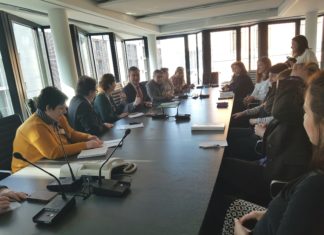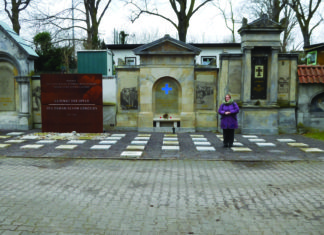By Harold Short
ROME — As previously reported in these pages, the Julfa Cemetery Digital Repatriation Project has the goal of creating a virtual reconstruction of the destroyed Julfa Cemetery, with 2,000 khachkars from the medieval and early modern periods as the initial objective. The project is based in and supported by Australian Catholic University (ACU) at its North Sydney campus.
With ACU’s support, over a period of 3 plus years, the project has collected a significant volume and range of Julfa Cemetery materials, including: Argam Ayvazyan’s archive of 2,000 photographs, purchased by ACU in 2015; digital copies of a further 500 photographs, including glass negatives made by Aram Vruyr and Zaven Sargsyan; a variety of maps and other documents; and over 50,000 film and digital photographs of extant Julfa monuments. Many of these materials were collected in two field trips to Armenia in 2013 and 2015.
The first priority in 2016 was to develop the archive further. In May a third field trip, to Armenia, Iran and Georgia, succeeded in gathering additional images of extant khachkars, including 3D scans and additional film and digital photographs. The team was also able to capture 3D audio, both environmental sound and liturgical recordings, as well as ‘environmental’ photographs, along the Arax River, as close as possible to the Julfa site.
Following the very successful field trip, the project used these materials to prepare our first immersive 3D exhibition. This presents 3D models of 15 of the extant khachkars, ram stones and tombstones, positioned as accurately as possible in the cemetery landscape, which is itself reconstructed as accurately as possible, both visually and aurally.
The exhibition was tested in Sydney at the end of August, and presented for the first time in Rome in late September. It is pioneering a revolutionary new approach to combining still images, 3D audio, 3D visualisations and traditional photography in order to render an emotionally compelling and dignified recreation of a destroyed cultural site.









